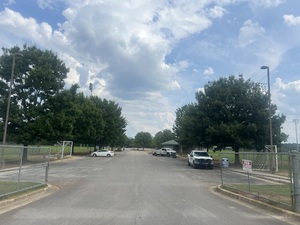Andrew Luna, Fall 2024
Cotton is King. This is an expression heard throughout the South, mostly in reference to how booming the cotton industry was for textile mills, and this essay seeks to focus on one of Huntsville's largest and the last one to fall, Merrimack Manufacturing. The mill was a part of a plan from reconstruction, to industrialize and bring the south out of an economic depression. The mill certainly did that, first bringing people and jobs aplenty, especially when they added a secondary mill.
The first mill sparked the flame and set people to work, Merrimack Hall was built soon after, and it hosted a number of services. You could get a shave, purchase all kinds of goods, children would get their education there, you could see the plays, and socialize with the community. This hall was a major center for the town to rally around, then the school was built. Joe S. Bradley school, named after Big Joe, a supervisor of the mill turned principal for the establishment. He served the school not only as principal, but as a coach, a community leader, and friend for the students. Right behind him was E. F. DuBose, a strict man with a reserved complexion. The school was eventually placed into the county's control, and continued all the way on till 1967.
Speaking of dates, let's discuss the timeline for the mill. With its completion in 1900, it created a burst of populus, the district reaching around 279 houses, a hospital, company store, and many small businesses. The second mill building was added in 1903, making it one the largest mills in the south. Once available it converted from steam to electricity, as the operators worked to make sure the mill was continually updated and renovated to increase production. These small updates worked to keep the mill away from the standard decline that all textile mills received after WW2. However, no amount of upkeep could prevent the mill from the fate of a declining industry, and in 1989 it discontinued operations. Finally in 1992, Huntsville lost its last textile mill.
The community, however, would not allow for the area to simply decay, so projects and grants have been allocated to the houses still standing from the time period of the mill. Merrimack Hall has worked to stay alive, currently providing shows/services to those with special needs/disabilities. The Merrimack Mill Village Organization works to maintain and preserve the homes/history of the mill and its impact on the community/area. The place where the mill once stood is now a park, and people are able to play soccer and enjoy outside recreation on the grounds.
Merrimack Mill is a part of Huntsville’s success, as this mill was one of the mills that caused the economic boom that sprung this city to what it is today. The Mill sponsored many businesses and buildings for the area, and created jobs and dreams. Times are different, people are different, places are different, but those old memories and a sense of community can still be seen throughout this mill district.
Bibliography
Primary Sources
Students of Joe Bradley School, The Bradleyean, Volume 5, Huntsville Alabama
Andrew Luna, 9/23/24 Huntsville Alabama.
Secondary Sources
Terri L. French, Huntsville Textile Mills & Villages, Linthead Legacy, The History Press at Charleston South-Carolina.
The Cotton Mills of Huntsville, Whitney Adrienne Snow, 2008, Huntsville Alabama
Acknowledgements
Thanks to my Mom for always listening to me, Sophia for keeping me calm and helping me focus, and Sabin for reminding me to take breaks from my work. Thanks as well to the UAH Archives for providing me with sources and aiding greatly in my research.

